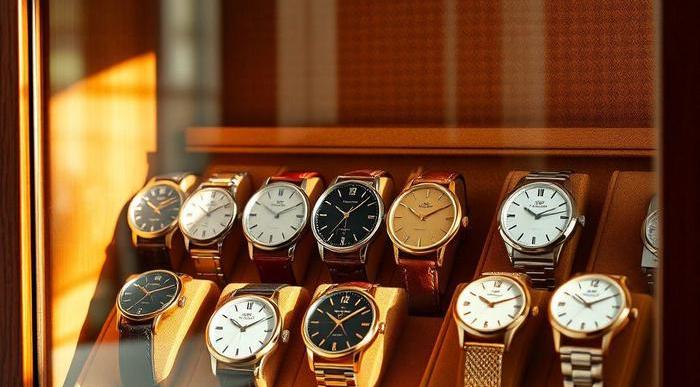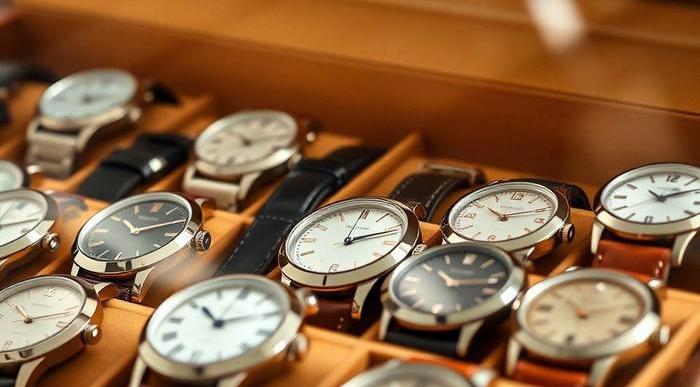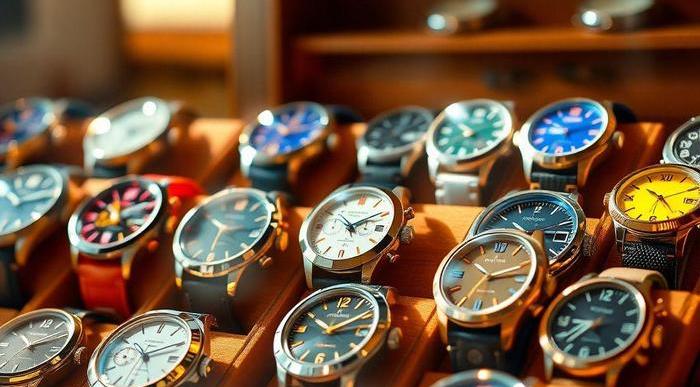Luxury Vs. Affordable Watches: What Justifies The Price?
Note: This page contains affiliate links.
As an Amazon Associate, I earn from qualifying purchases when you click on the link, but you are not charged extra.
In the world of watches, the divide between luxury and affordable timepieces isn’t always as straightforward as it seems. What justifies a $10,000 price tag versus a $100 one? Factors like brand prestige, craftsmanship, materials, and exclusivity play a crucial role in determining a watch’s worth. While affordable watches often focus on functionality and accessible style, luxury watches tend to emphasize artistry, heritage, and exceptional engineering. High-end models, such as those from Rolex or Patek Philippe, are often painstakingly assembled, sometimes by hand, using advanced techniques and premium materials, which contributes significantly to their higher costs.
Affordable watches, on the other hand, are usually mass-produced with an emphasis on efficient manufacturing. Yet, as technology improves, the gap between affordable and luxury watches narrows, with more budget-friendly brands offering impressive movements and aesthetically pleasing designs at a fraction of the cost. In the end, the distinction largely comes down to whether a buyer values prestige and craftsmanship or accessibility and functionality.
Defining Luxury In The Watch Market
In the watch world, “luxury” signifies more than a high price tag—it denotes exclusivity, artistry, and a long-standing reputation. Luxury watch brands typically have decades, if not centuries, of history behind them, which adds to their mystique and allure. Companies like Vacheron Constantin and Audemars Piguet have not only survived but thrived by building legacies around quality and style, setting benchmarks for the rest of the industry.
Luxury watches often incorporate intricate details such as hand-finished movements, limited-edition designs, and sophisticated complications like tourbillons or perpetual calendars. These elements go beyond basic functionality, highlighting the brand’s dedication to watchmaking as an art form. For consumers, wearing a luxury watch represents a statement of taste, refinement, and sometimes affluence, differentiating it sharply from a simple time-telling device. In essence, luxury watches embody an ideal—a blend of history, craft, and exclusivity that transcends mere utility.
Understanding Brand Heritage And Value
Brand heritage is integral to the watch industry, where history and reputation can be as valuable as the materials used. Take Rolex, for example. Established in 1905, Rolex has built a legacy of reliability, precision, and innovation. The brand’s reputation didn’t materialize overnight; it was crafted over a century of consistently meeting high standards and creating iconic designs that have endured. Heritage brands often hold a higher value because they are associated with historical milestones, technological breakthroughs, or iconic wearers—from astronauts to presidents.
For affordable brands, heritage might be less about tradition and more about adapting quickly to modern trends and customer needs. Brands like Seiko have made a mark by offering high-quality, reliable timepieces without the price tag of Swiss luxury models. While these brands may lack the exclusivity of luxury counterparts, their value lies in their dedication to accessibility and innovation, providing solid watches that cater to a broader audience. Brand heritage, in this context, is less about status and more about the reliable reputation that makes these watches a great choice for daily wear.
Comparing Craftsmanship In Different Price Ranges

Craftsmanship is a hallmark of luxury watches, with many luxury watchmakers employing artisans who specialize in specific aspects of the watchmaking process, from hand-assembling movements to intricately decorating dials. Swiss watch brands, for example, are renowned for their meticulous craftsmanship, with brands like Patek Philippe, Audemars Piguet, and Jaeger-LeCoultre taking years to train their watchmakers in the art of creating reliable, complex mechanisms. In luxury watches, every component is designed and crafted with precision, resulting in a piece that feels more like wearable art than a simple timekeeper.
Affordable watches, on the other hand, usually prioritize cost-effective manufacturing processes. Rather than employing hand-assembled components, they often use machines to produce parts at a larger scale, which lowers the cost. Despite this, affordable watches from reputable brands such as Citizen and Timex are often surprisingly durable and efficient, showcasing impressive craftsmanship relative to their price point. While they may lack the fine detailing of luxury watches, affordable options frequently demonstrate high levels of durability and dependability, providing value without excessive spending.
The Role Of Materials In Price Differentiation
Material selection is another critical factor in determining a watch’s price. High-end watches are typically made from premium materials like 18-karat gold, platinum, or titanium, while budget-friendly watches often utilize stainless steel or alloy. Luxury watches may also incorporate synthetic or natural gemstones, hand-crafted leather straps, or unique metal treatments that add to their exclusivity and durability. Watches like the Omega Seamaster use advanced materials like ceramic or sapphire crystal, which are scratch-resistant and nearly indestructible, adding both practical value and aesthetic appeal.
In affordable watches, manufacturers commonly use mineral glass instead of sapphire crystal or stainless steel instead of precious metals. Although less costly, these materials are often designed to last and perform reliably for everyday use. Nonetheless, advancements in technology have led some affordable brands to adopt higher-grade materials at lower price points, so that even budget watches are more durable and scratch-resistant than ever before.
Market Trends In Affordable Watch Brands

In recent years, the market for affordable watches has shifted significantly. The rise of direct-to-consumer brands like MVMT and Daniel Wellington has brought stylish, affordable options to consumers at unprecedented speed, largely through online retail channels. These brands have built strong followings by offering fashionable designs at accessible prices, often by cutting out intermediaries to reduce costs. Additionally, the integration of smart technology in affordable watches has increased demand, with brands like Fossil and Casio producing watches that cater to modern, tech-savvy consumers.
At the same time, traditional affordable brands like Seiko and Orient are experiencing a resurgence among collectors and enthusiasts who appreciate their reliability and craftsmanship. Affordable watches are increasingly seen not just as functional accessories but as stylish, versatile options that can offer aesthetic value and, in some cases, even a bit of collectability.
Collectability: Luxury Vs. Affordable Models
Collectability is a major differentiator between luxury and affordable watches. High-end models often appreciate in value over time, especially if they belong to limited editions, vintage series, or have unique features that make them rare. Brands like Rolex and Patek Philippe are particularly notable for this, as their limited production runs create a scarcity that drives up demand. Many collectors view luxury watches as investments, with some models fetching double or even triple their retail price at auctions.
Affordable watches, however, generally don’t experience the same appreciation in value. While they may have sentimental value or become vintage collectibles over time, they typically don’t command high resale prices. Yet, there is an emerging market for vintage models from affordable brands like Seiko and Casio, with some collectors appreciating them for their nostalgic appeal and durability.
The Impact Of Limited Editions On Value

Limited editions play a substantial role in creating desirability and increasing the perceived value of a watch. Luxury watch brands frequently release limited-edition models to mark anniversaries, partnerships, or unique milestones. Limited production runs create exclusivity and often come with unique design elements or advanced movements, which can increase the watch’s collectability and value over time.
Affordable brands have also tapped into the limited-edition trend, though typically on a smaller scale and without the same price impact. For example, Casio’s collaboration on limited-edition G-Shock models appeals to fans seeking something unique without breaking the bank. While these models may not reach the same value as luxury limited editions, they add an element of exclusivity for collectors at a more accessible price point.
Understanding Retail Markups
The retail markup on luxury watches can often be substantial, sometimes more than 50% of the manufacturing cost, due to the brand’s marketing, exclusivity, and retail overheads. A luxury brand’s price structure reflects not only the cost of materials and craftsmanship but also the cost of maintaining its brand prestige, retail network, and customer service. In contrast, affordable watches often have lower markups as they rely more on volume sales and streamlined distribution, which makes them more accessible.
Online retailers and direct-to-consumer brands have changed this dynamic by reducing markups, offering quality watches at more competitive prices than traditional retail models. This shift has empowered customers to find well-made watches without the added costs of intermediaries.
Evaluating Personal Preferences In Watch Purchases
Ultimately, choosing between luxury and affordable watches comes down to personal preference. Some people are drawn to the artistry, heritage, and investment potential of luxury timepieces, while others value affordability, practicality, and style without the premium price. For some, a watch is purely functional; for others, it’s a symbol of personal taste and status.
When considering a watch purchase, potential buyers should think about what they value most—whether that’s brand prestige, durability, aesthetics, or simply a reliable mechanism. Each watch category offers unique benefits, and understanding personal preferences helps buyers find a watch that truly resonates with their lifestyle and taste.
Conclusion
The distinction between luxury and affordable watches encapsulates a range of factors, from heritage and craftsmanship to materials and collectability. Luxury watches stand as timeless symbols of prestige and meticulous artistry, while affordable watches fulfill a need for quality and style at accessible prices. As market trends evolve and technology advances, both ends of the watch spectrum are adapting to meet the needs of diverse consumers. Whether a watch enthusiast chooses a classic luxury model or a reliable affordable piece, each choice has value in a world where timekeeping remains both a function and an art.
